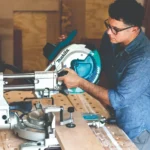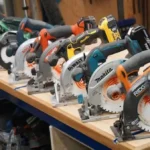If you are a DIY enthusiast or a professional contractor, you might have wondered whether you need both a drill and an impact driver in your toolbox. After all, they look similar and can both drive screws and drill holes. However, there are some key differences between these two tools that make them suitable for different tasks and situations. In this article, we will explain why you need a drill if you have an impact driver, and how to use them effectively.
The main difference between a drill and an impact driver
The main difference between a drill and an impact driver is that a drill uses a constant torque to rotate the bit, while an impact driver uses a series of rapid hammering actions to deliver more torque and speed. This means that an impact driver can drive screws faster and deeper than a drill, especially into hard materials like metal and concrete. An impact driver also has a hexagonal chuck that accepts only 1/4-inch hex shank bits, while a drill has a keyless chuck that can accept a variety of round and hex shank bits.
When to use a drill and when to use an impact driver
A drill is a versatile tool that can perform a range of tasks, such as drilling holes, driving screws, sanding, polishing, and mixing. A drill is ideal for precision work, such as drilling pilot holes, countersinking, and installing hardware. A drill also has a clutch that allows you to adjust the torque and prevent overdriving or stripping screws. A drill is usually lighter and more comfortable to hold than an impact driver, and has a lower noise level.
An impact driver is a specialized tool that is designed for driving large or long screws, bolts, and lag screws. An impact driver can handle tough materials and tight spaces, where a drill might struggle or stall. An impact driver also has a quick-release chuck that makes it easy to change bits. An impact driver is more powerful and faster than a drill, and has a higher noise level.
How to use a drill and an impact driver together
A drill and an impact driver can complement each other and make your work more efficient and easier. For example, you can use a drill to make pilot holes and an impact driver to drive screws. This way, you can prevent splitting the wood and ensure a flush finish. You can also use a drill to make larger holes and an impact driver to fasten nuts and bolts. This way, you can save time and energy and avoid switching bits.
To use a drill and an impact driver together, you will need some accessories, such as drill bits, driver bits, nut drivers, and adapters. You will also need to match the right bit size and type to the screw size and head. You will also need to adjust the speed and torque settings of your tools according to the material and task. You will also need to wear safety glasses, gloves, and ear protection when using these tools.
Conclusion
A drill and an impact driver are both useful tools that can help you with various projects and tasks. However, they have different features and functions that make them suitable for different situations. A drill is a versatile tool that can perform a range of tasks, such as drilling holes, driving screws, and more. A drill is ideal for precision work and has a clutch that allows you to control the torque.
An impact driver is a specialized tool that can drive screws faster and deeper than a drill, especially into hard materials. An impact driver uses a series of rapid hammering actions to deliver more torque and speed. You can use a drill and an impact driver together to make your work more efficient and easier. You just need to have the right accessories, bits, and settings for your tools.



